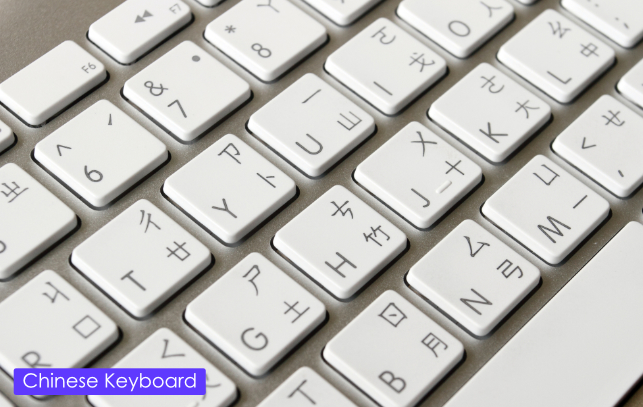
The first known markings made by humans date back some
40,000 years to the Stone Age, and were numerical in character. Only later, did
symbols come to represent sounds and concept.
Early scholars attempted to link Chinese writing to
Cuneiform or ancient Egyptian hieroglyphs, but were unable to establish a
connection, and Chinese written language appears to have arisen independently
of other writing forms, generally held to have begun with the evolution of cuneiform
of Mesopotamia, which began its evolution around 4000 BC.
In China, however, predating cuneiform by some two
thousand years, the Jiahu symbols were unearthed in Hunan province, a
collection of early pictograms dated to 6000 BC which bear distinct resemblances to
early Chinese characters of the Shang script, the earliest known examples of
which archaeologically do not emerge for a further 5000 years.
Further discoveries at Damaidi feature 8,453 separate
characters that are likewise similar to early Shang script and dated to at least
5,000 BC, but debate still surrounds the issue of whether these finds represent
true written language.
Calligraphy is a western term and is known in China as
Shufa, and was first formalised under China’s first unified emperor, Qin Shi
Huang with a set of 3,000 characters, though even before this time, the lyrically
sophisticated philosophical masterworks of Confucius and Lao Tzu had already
been created centuries earlier.
Unfortunately, Qin Shi Huang also had a flair for mass
book burnings throughout the empire, and who knows what other precious gems of
ancient Chinese thought have been entirely lost.
The relationship of symbols to words is further
complicated by the multi tonal inflections of meaning at work in spoken
Chinese. Unlike many other language systems, which were condensed and
simplified into phonetic alphabets, the Chinese script has since evolved to a
staggering 50,000 individual characters.
Chinese written forms have widely influenced Vietnamese,
Korean and Japanese styles of writing, while the Burmese, Cambodian and Thai
written languages have evolved from Indian Sanskrit through Khmer influence.
The art of writing has long been held in high regard in
China, and Shufa is an elevated art form, capable of immensely subtle plays of
meaning both philosophic and visual.
The use of brushstrokes in Chinese script has endowed the
language not only with great beauty but is also highly expressive of the nature
of form itself and reflects the cultural nuances, understanding and
intelligence of the calligrapher.
The practice of Shufa was from an early time closely
entwined within the Chinese understanding of natural motion, exemplified by
Taoist yoga and Kung Fu, and the same sense of movement and balance are evident
in the writing style, particularly in the poetic accompaniments to many Chinese
paintings.
Because Chinese script is a visual language, it contains
conceptual notions widely used in the traditions of Chinese poetry that are
inevitably simplified in translation and lose their subtle eloquence and
immediacy of meaning. Indeed, the pictorial nature of expression also conveys
concepts that simply have no realisable equivalent in phonetic representation
systems.
Inevitably too, in the modern world, the standardisation
of calligraphy for print, since it removes the essence of motion, has led to
less florid interpretative subtlety, but nevertheless, a visitor to china will
need to familiarise themselves with at least 3,000 characters to read a
newspaper.
Likewise, the age of computing has brought a particular
set of challenges, which have required innovations in keyboard input methods and
software.

Many systems in use in China are adaptations of the
standard QWERTY keyboard and utilise multi-function key options to get around
the innate problem of the multiplicity of characters required to create usable
literary work.
The evolutionary nature of Shufa characters in history,
whereby characters were given meaning extensions by additional script elements
also allows the overprinting of some of the basic phonetic forms, to create
more complex characters.
Modern predictive software is an invaluable aid to speed
of input, and can even additionally ‘learn’ the styles, dialectic and
dictionary preferences of individual writers in the presentation of characters.
The complexities presented by the limitations of phone
texting, while still possible in Chinese, has led to the widespread adoption of
voice messaging as a more convenient alternative.
In the ever escalating integration of mobile technology
with the control of vehicles, interactive tools, office systems and domestic
hardware, voice recognition systems to enable the issuing of control commands
are eclipsing written forms across the globe.
Again the dialectic complexity and musicality of Chinese
language is a spur to innovation towards a future where all appliances will not
only be able to be controlled in this manner, but in any language.
Despite the rapid absorption of modern technology in
China, the original principals embodied by Shufa are still regarded as high
art, and widely practiced by artists and scholars and many other individuals
out of pure love and devotion to its forms.
Just as modern computing can build sophisticated and even
physically unplayable music, nothing can replace the subtle beauty and emotion
of a fine instrumentalist, and the art of the brush, no matter how ancient,
will always represent the most wonderful achievement of poetic expression.